Not only humans destroy nature, animals too! Species that reach a breeding environment that is not their natural environment may take over and destroy it. Which beetles destroy whole trees? Which birds destroy the chicks of other birds? And who threatens the saber bushes? The silent invaders
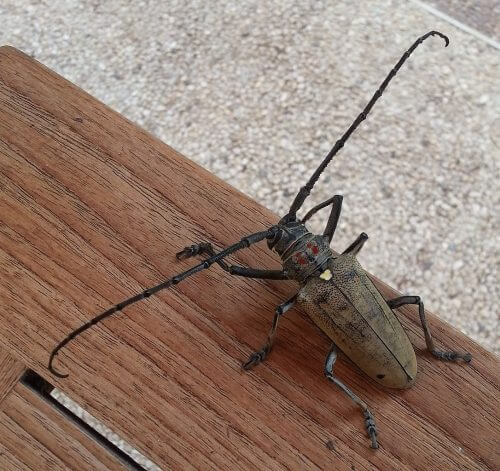
Written by: Ariel Kers, Young Galileo
When I was a child, my father cultivated a beautiful fig tree in the yard of our house in the kibbutz. The tree grew quickly, and after a short time it produced fruits - sweet figs. After a few years of prosperity, we suddenly saw that the tree's leaves were smaller and it looked unwell, as if it had a disease. At the bottom of the tree, a substance that looked like sawdust had accumulated, and we realized that there were caterpillars in it that were breaking off and digging holes in it.
It turned out that these were the larvae of a fig beetle. The hornbill is an invasive species. This is a huge beetle (about eight to ten centimeters long!) with huge tentacles, which came to us in wood shipments from the Far East and Africa about seventy years ago. Caterpillars attack the fig trees, and if there is no aggressive extermination, they simply destroy the tree! This was also the fate of our tree, since unfortunately we were unable to fight the invaders. Look what a small beetle can do to a big tree!
The hicaroni is just one of the unwanted invasive species that arrive in our country all the time. Invasive species are plants and animals that do not belong to our natural environment, enter it without supervision and control due to human activity, and harm the local nature.
We all love animals and want their best, but the invasive species pose a problem for us. If we want to preserve our nature, we must fight these invasive species and eliminate them, or at least curb them. Which animals are considered invasive species, what is actually an invasive species and how do you fight it?
Violation of the natural balance
Invasive species are animals that humans transfer - intentionally or unintentionally - to a new country or an area where they have not lived before. In most cases, in the new area these species have no natural enemies to curb their spread, and they quickly damage the ecological balance of the area. When they start to become an ecological danger, they are defined as invasive species.
The phenomenon of invasive species has become a difficult global challenge in regards to preserving nature and habitats. Apart from the destructive weevil that destroyed our fig tree, there are many examples from around the world. For example, the extinction of many fish species in Lake Victoria in East Africa by the Nile princess fish, which man brought in to enrich the local fish; The Indian mongoose, which was brought to the Caribbean islands to exterminate rats, wiped out local species of birds and reptiles and severely damaged the ecology of the islands.
Once the intruder is established in our new abode, it is almost impossible to get rid of it!
We will tell about some of the invasive species that arrived in Israel, some of which are already real members of our nature and near our homes.
Darra parrot (common darra)
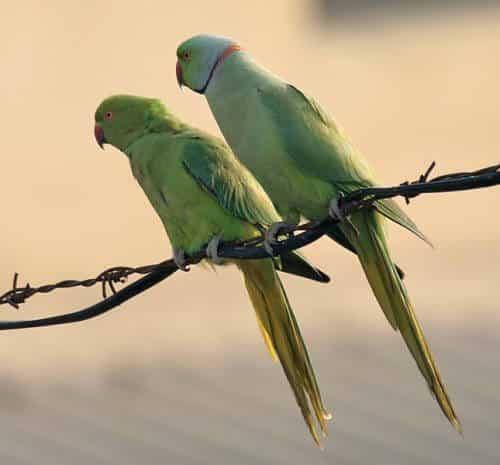
Derara arrived in Israel as early as the sixties of the twentieth century. The beautiful green parrot was imported from Iran as an ornamental bird that is kept at home. One of the pairs of parrots managed to escape from the cage and began to breed in the area of the Mikve Israel Agricultural School in the center of the country. Another import from Iran and another escape of sparrows from the cages established large flocks of them in our country.
The sparrows first bred in the areas of water bodies and along the Jordan Valley, and today we find them almost all over the country, making a characteristic noise and gathering in large groups on azadrecht trees. How did the Darra parrots manage to establish themselves here? It is speculated that parrots were helped by the gardening of man, who likes tropical trees, which the parrots also like. The parrots are harmful to agriculture, but are not considered a dangerous species for the environment or for humans.
Mina There is
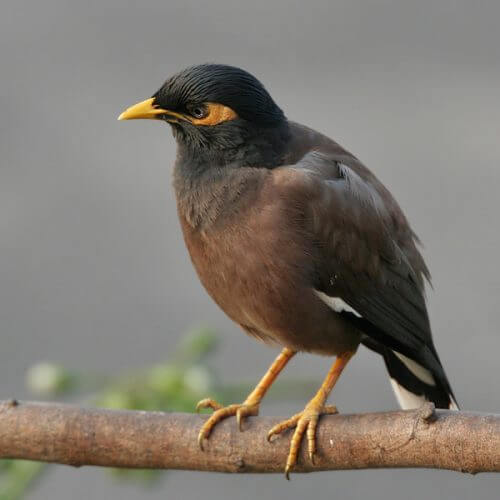
The meena is a handsome songbird that came to us from India. Her beautiful singing masks the danger and the damage she causes to the environment. Today the meena is considered one of the most harmful invasive species, because it causes the extinction of local bird species.
The first species arrived in Israel in the eighties of the last century, escaped from their cage (as seen in Safari in Yarkon Park in Tel Aviv) and began to spread everywhere. Today they are seen all over the country. The bird successfully competes with the local bird species for food and nesting sites, and even preys on their young.
nutria
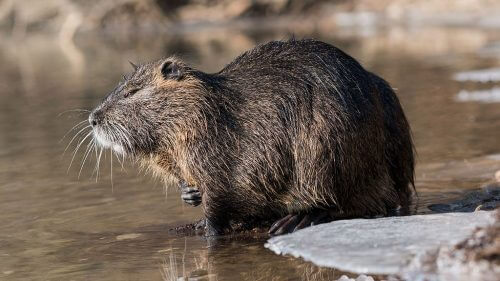
Anyone who has traveled to the Hula Reserve and Agamon Hula has seen there large, gray rodents that roam around and are not at all afraid of humans. These are the nutria, one of the largest mammals in the country, and perhaps the best known invasive species in Israel.
Nutria were brought to us in Margentina about fifty years ago - for the fur industry. Yes, there were people who thought we would want to wear a coat made of notarie fur in the Israeli winter... the operation failed after it became clear that in our Middle Eastern climate, notarii grow coarse and unpleasant fur that is not in demand.
As you probably understood, the notaries escaped from captivity and multiplied, first in the north of the country. Today thousands of them live near water bodies and fish ponds. The main damage they cause is human damage to rare Israeli aquatic plants, such as the endangered plant.
The little fire ant
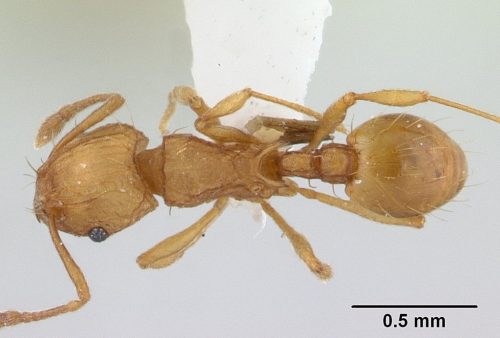
In the early XNUMXs, members of kibbutzim in the Jordan Valley, such as Kibbutz Afikim, began to feel painful stings all over their bodies. It turned out that a tiny red ant, hiding among logs, dry leaves and stones, was responsible for the bites.
The fire ant, which is only two to three millimeters long, came to us in shipments of wood from the Homazones basin in Brazil. Kibbutz Afikim had a large sawmill, and he supplied wood to the whole country. Is it any wonder that the pesky ant spread in Israel like wildfire?
The prickly and aggressive ant not only lives in lawns and harasses humans inside their homes, but also changes its environment and eradicates it from other animals! In other words, where there are anthills - the population of animals on the ground, such as spiders, ants and beetles, is drastically reduced. fight an ant? almost impossible.
The wasps of the objects
In Israel, apparently in 2000, two species of harmful wasps were introduced from Australia - the wart-eating wasp and the blackhead wasp. The experts speculate that the wasps somehow arrived on international flights from the distant continent!
The leafhopper is a tiny insect that is particularly harmful to trees. If you have asked yourself what are the reasons for the disappearance of bees in Israel, it is possible to assume that the hornet wasps, which plague the eucalyptus trees, which are a pasture for many bees, have a part in the matter. The fight against wasps is done using... that's right, more wasps from Australia, which are the natural enemy of wasps! For now it works.
The red palm weevil
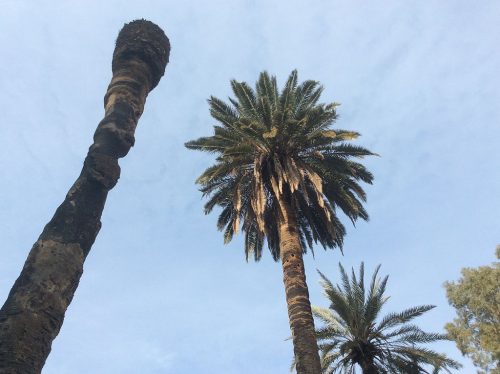
If you have seen unfortunate palm trees drying up and dying throughout the country in recent years, know that the red palm weevil is responsible for the damage - another harmful beetle that invaded us from East Asia.
This beetle came to us in the late nineties of the twentieth century, and it severely damages date palms, which are an important source of livelihood for many Israeli farmers. The weevil lays eggs inside the palms, and its larvae eat the tree from the inside, as in the case of the fig.
When you see the damage, it's too late to treat the tree. Only a particularly vigorous pest control can save the Israeli palms from the threatening beetle. The weevil has already caused enormous damage in other countries it has invaded, such as Italy, Greece and Turkey.
Aggregate
It is hard to imagine the landscapes of our country without thorny saber hedges, and our summers without sweet sabers. But the saber aphid thinks differently and destroys the saber hedges in the north of the country. The activity of the aphid, which probably invaded us from Central America or its south, was discovered a few years ago, and threatens the Israeli saber bushes.
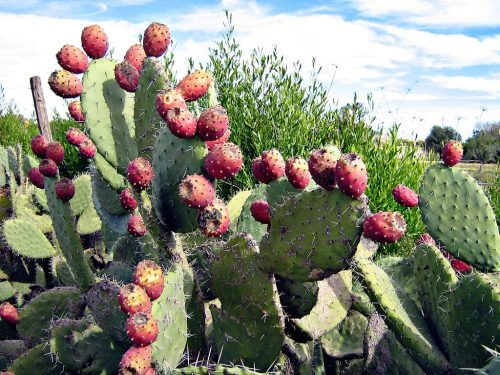
The aphid secretes toxins into the tissues of the aphid and extracts food from it. The clusters dry up and wither, and the aphid moves to the next bush. It is possible that the activity of the aphid was monitored in time, as it is now treated with vigorous means of spraying, pesticides and biological warfare.
A strange fact is that the saber itself is an invasive species that was brought here from America after the discovery of the continent about 500 years ago and thrived here. Boomerika The dangerous zebra has natural enemies that hold her back, but here she has no enemies. Therefore, from the moment she invaded us, the saber bushes are in danger.
What is being done against the invasion of the masses?
In the face of some of the invasive species, such as jellyfish or fish that arrived on our shores from the Red Sea following the opening of the Suez Canal connecting the Red Sea to the Mediterranean Sea, there is simply nothing to be done. But there is something to be done about the species that man brings into the country. The war against invasive species begins with awareness of the problem, but awareness is almost non-existent among people who are not experts in the matter.
Invasive species often arrive in Israel with the help of people who have no idea that they could cause harm, as in the case of the weevil or the weevil, which apparently arrived inside palm seedlings.
Some countries have already enacted laws designed to prevent the invasion of foreign species, such as Britain, the United States, New Zealand and Australia, which was severely damaged by the introduction of invasive species many years ago. In Israel, the legislators' and politicians' awareness of the issue is also low, and until they put invasive species at the top of their priority list, the fragile Israeli nature will continue to suffer from destructive and aggressive invasive species.
The article was published in Young Galileo - the monthly for curious children. For a gift digital sheet Click

7 תגובות
The fig beetle is a pest that does a lot of damage and its treatment requires the use of many pesticides
Friday November 24, 2017
Zion Hachami
0525114320 089943920
153-8-9943920: fax to email
zionhaha@netvision.net.il
My website is ZIONAGRO.COM
in honor of
The Great Invasion | the science
https://www.hayadan.org.il/the-great-invasion-1407138
H.N.,
Discussed: Does the aphid suck nutrients from the aphid and inject deadly toxins into the plant?
Questions
A. What toxins does the aphid (aphid) penetrate into the tissues of the aphid?
B. The mode/methods of action of the toxins?
third. The characteristics of toxins?
a quote
"The aphid secretes toxins into the tissues of the aphid and extracts food from it. The clusters dry up and wither, and the aphid moves to the next bush. "
Thanks,
Zion Hachami
0525114320
The black soldier fly that came from North America is an invasive species that actually benefits humans, it is incredibly effective in treating organic waste, does not spread diseases like the house fly and even reduces the population of the annoying house fly by up to 10%.
https://he.m.wikipedia.org/wiki/הרמטיה_אילוסנס
Whenever invaders are mentioned, they talk about invaders that cause damage to agriculture or the local species...
For some reason, the good invaders are forgotten, for example - the scout bird or the mambos bee and more.
In my opinion, because of the location in which Israel is located and the lack of possibility and desire to block the invaders, we are expected to be invaded by many different invaders and a war with them is a lost war in advance.
The fig weevil destroyed the figs, and Kypanodis the almonds (and many other roses), and the palm weevil the palms, we brought avocado and to this day it had no enemy at all and now we have the Amboriza beetle that threatens the avocado...
In addition to sparrows, and species, the domestic cat also became the most common wild animal in Israel, and the domestic pigeon the most common bird, and so on...
On the other hand, we also have many invasive plants, some of them were brought in on purpose, all kinds of new fruit and ornamental trees that were not here before, and they escaped from the gardens and take over the landscape, maybe we just need to get used to the fact that the nature around us shifts and changes.
Even dogs that have become wild are an invasive species!
To me, the issue of invasive species is the best distinction between protecting the ecosystem and animal rights activists, and no, it's not the same thing.
Subtitle:
"Not only humans destroy nature, animals too! "
I twist the rest of what is written in the article because:
The given examples of invasive species that became "invasive" because of man,
Those species in their native areas have natural enemies that prevent the "destruction of nature",
The "invasion" of the Nile princess to Lake Victoria was indeed during the British rule
But the one who is directly responsible for this is the Israeli - Aviahu Nelson - who raised the princess
in the ponds near the lake and "looked after" (intentionally or out of negligence) its penetration into the lake,
Sparrowhawks were observed in 1968 in the vineyard of Ein-Gadi,
When dealing with those who damage eucalyptus or saber, it should be remembered that they are both
can be considered "invaders" since the Saber arrived with Arab traders from Central America
And the "story" of the eucalyptuses that came from Australia is known but is flawed by inaccuracy...
There will be those who will say that this is nature's way of developing and changing
But as in many other cases it is the same here
This is not "development according to nature" but
Damage and disturbance by man...